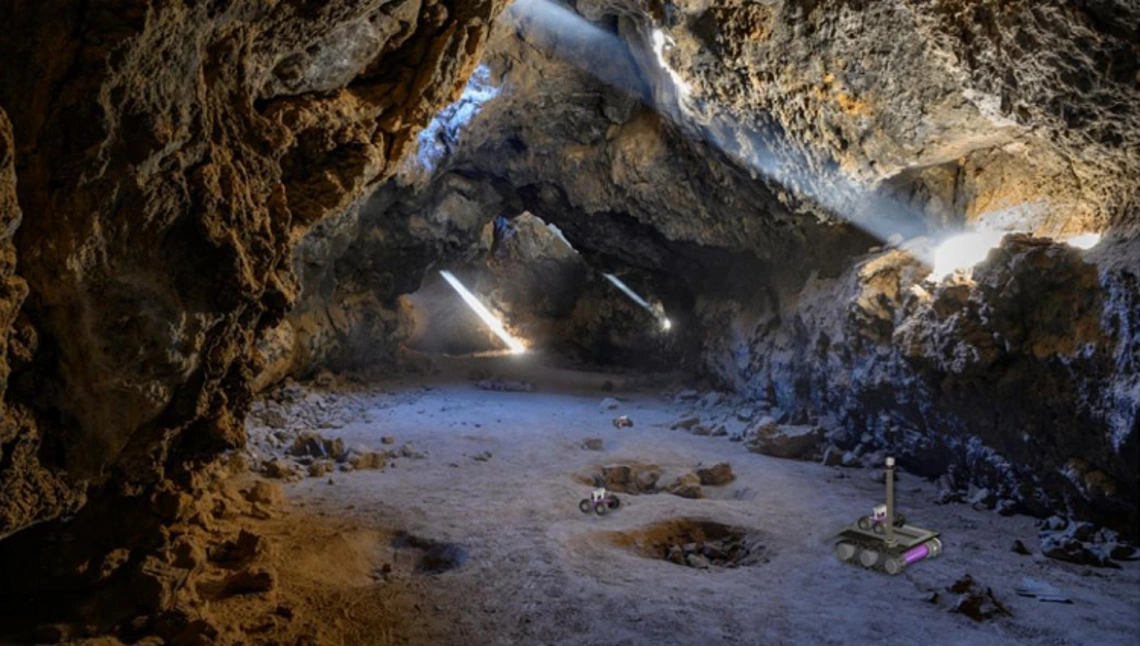Fink Authors Paper on Communication for Space-Exploring Robots

Getting to another planet is just the beginning of the journey. SIE associate professor Wolfgang Fink is lead author on a new paper that introduces a communication network that would allow robotic rovers on the moon or Mars to work together as a team. Using "Mesh Topology," the network would allow rovers and even submersibles to work independently from human input. For an easier understanding of its work, Fink points to the classic fairy tale Hansel and Gretel.
"If you remember the book, you know how Hansel and Gretel dropped breadcrumbs to make sure they'd find their way back," said Fink, founder and director of the Visual and Autonomous Exploration Systems Research Laboratory at Caltech and UA. “In our scenario, the 'breadcrumbs' are miniaturized sensors that piggyback on the rovers, which deploy the sensors as they traverse a cave or other subsurface environment.”
The potential environments the robots would explore are caves and lava tubes, ideal habitats for astronauts who would arrive after the rovers. The caves are shielded from cosmic radiation, making them good choices for the astronauts to stay in. According to Fink and his co-authors, the approach could help address one of NASA's Space Technology Grand Challenges by helping overcome the limited ability of current technology to safely traverse environments on comets, asteroids, moons and planetary bodies.
Continuously monitoring their environment and maintaining awareness of where they are in space, the rovers proceed on their own, connected to each other via a wireless data connection, deploying communication nodes along the way. Once a rover senses the signal is fading but still within range, it drops a communication node, regardless of how much distance has actually passed since it placed the last node.
“One of the new aspects is what we call opportunistic deployment – the idea that you deploy the 'breadcrumbs' when you have to and not according to a previously planned schedule,” Fink said.
All the while, there is no need for input from the mother rover; each subordinate rover will make that determination on its own, Fink added. The system can work in one of two ways, Fink explained. In one, the mother rover acts as a passive recipient, collecting data transmitted by the rovers doing the exploration. In the other, the mother rover acts as the orchestrator, controlling the rovers' moves like a puppet master.
